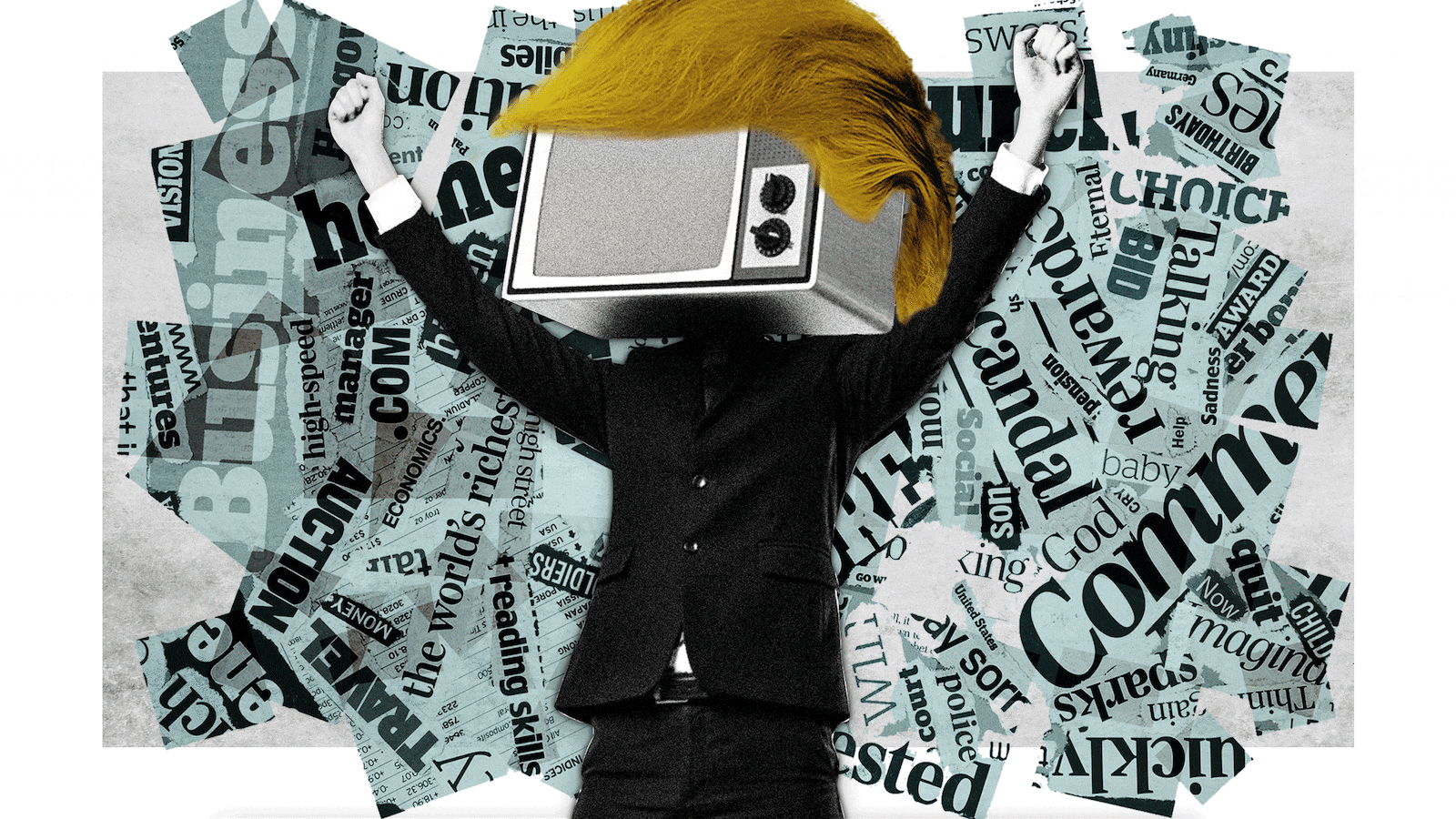Donald Trump is living a personal nightmare. Just days before a critical election, he finds himself unable to influence what the political press is covering.
The president has spent the last week attempting to gin up media coverage of a caravan of migrants making their way from Honduras to the Mexico-U.S. border. He’s heralded his signing of a major bill to combat the opioid epidemic. He’s touted additional—though currently nonexistent—legislation to further slash middle-class taxes.
But a series of real-world events—primarily the dispatch of explosive devices to numerous top Democratic officials by what appears to be an obsessive Trump fan— have overwhelmed that storyline. And it’s left Trump notably churlish.
“You could see the frustration,” said Eric Bolling, a conservative TV host and close Trump friend who attended a White House summit on opioid abuse on Wednesday, as the bomb scare story broke. With much fanfare, the president signed his first major piece of legislation addressing the opioid crisis, which lifted restrictions on Medicare and Medicaid coverage for addicts, among other measures. But by day’s end, that was hardly a blip on the media radar. The bomb scare story was dominating headlines and cable news coverage.
On Friday morning, hours before the bomb suspect, Cesar Sayoc, was apprehended, Trump suggested that the bomb scares had been designed to distract the news media away from the Republican Party’s preferred agenda.
“The momentum was clearly on the Republican side,” Bolling said. “I don’t know that this is going to change anything, but certainly as much as President Trump is campaigning...for the news story to derail, I don’t know that that is frustrating him but I would suspect that that is something behind it.”
A voracious consumer of the media, Trump prides himself on his ability to shape a news cycle and even credits his own success to his driving of campaign storylines in the closing weeks of the 2016 election. His attention to the media’s editorial whims—especially those that affect him directly—is legendary among those who have worked for him.
“He probably follows the tick tock more closely than any major politician ever,” said one former top Trump White House aide. “Obviously he is in tune to what is being broadcast on cable but also on Twitter as well. And he will do everything he can to move it to where he wants it to go.”

Trump first showed his ability to manipulate the media during the tabloid-drenched New York City news cycles of the ’70s and ’80s. And he honed it as a mega-reality TV star in the ’00s. As president, he’s been given the tools to play the role of global assignment editor. And, more often than not, he’s used them.
“He simply has to say a couple of words, send a tweet, make a provocative comment on the south lawn and everybody goes running,” said Matt Schlapp, an influential Republican lobbyist.
Trump’s media manipulation was on display earlier this week, when he moved the caravan story from the purview of right-wing outlets into the focal point of the mainstream press. The president declared that there were unknown Middle Easterners among the larger group of poor and hungry migrants. It was, he later admitted, a statement unsupported by any evidence, but that was beside the point. The caravan featured extensively on cable news and was pictured above the fold in The New York Times two days in a row.
As the topic faded behind the panic over the bomb threats, Trump’s angst became evident. At a rally in Wisconsin, he seemed almost apologetic to the crowd for his muted speech. “You see how nice I’m behaving tonight,” he joked. “Can you believe this? We’re all behaving very well and hopefully we can keep it that way.”
A day later, as the bomb threats continued to dominate headlines, his team floated the idea of him issuing an executive order that would effectively stop migration across the southern border—a move that was quickly framed as a political sop to conservative voters.
“He loves to control the narrative. In 2016, it broke late for him. In 2018 it hasn’t,” said Sam Nunberg, a former Trump aide who was memorably fired during the campaign. “This bombing does not help. Let’s just call it as it is.”
Trump’s frustrations over his inability to play media conductor haven’t ended there. On Friday morning, he dashed off a complaint about how his Twitter follower count had remained stagnant for days. That evening, he complained that a recent policy pronouncement to reduce the prices of certain prescription drugs had not received sufficient media coverage.
“Very, very little ink by these great gentlemen,” he said, pointing to the media in the back of the arena. “Fake news.”
In recent days and weeks, cable channels (including Fox News) have declined to air his campaign rallies live. Two sources close to Trump said that—due to his voracious media consumption and awareness of the coverage he receives—the president is almost certainly aware of the drop-off in that previously uninterrupted cable-news coverage. Both sources noted how much joy and satisfaction he derived from being able to retain such unfettered media attention since the campaign.
“He definitely does not like this,” one confidant said of the drop-off.
Trump has also had to shift his attention away from topics that his political aides have advised him to emphasize prior to the election. Opioids is one of them.
Bolling was scheduled for a sit-down with the president on Wednesday to discuss the opioid crisis. But that meeting was postponed as the president responded to the unfolding bomb scare news, he said, underscoring the degree to which the news had already begun to dominate. The irony, Bolling said, is that Cesar Sayoc, the alleged perpetrator of the bomb plot, appears to be a Trump supporter.
“If I were in the White House right now, my frustration would be it appears to be someone who’s a Trump supporter,” Bolling said. “We have the momentum, why in the world would you get in the way of the pendulum swinging back in our direction?”
With reporting by Asawin Suebsaeng







